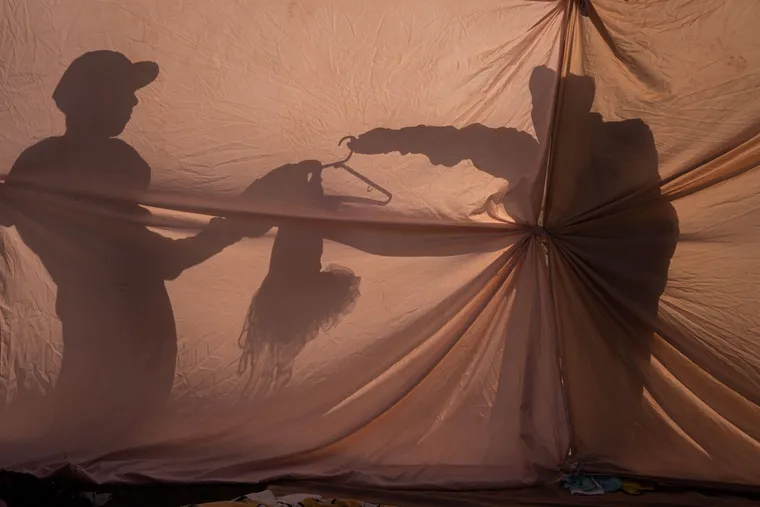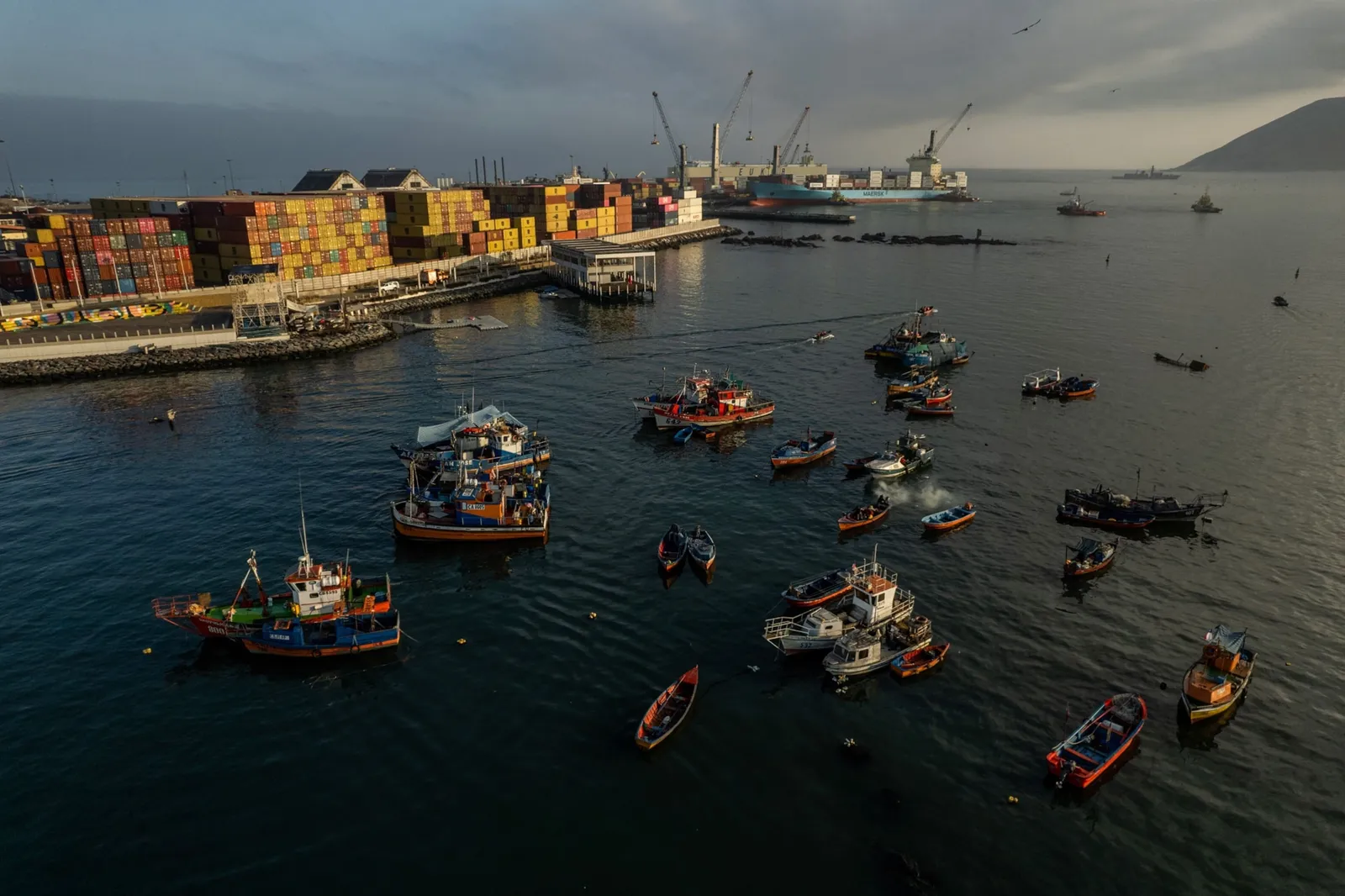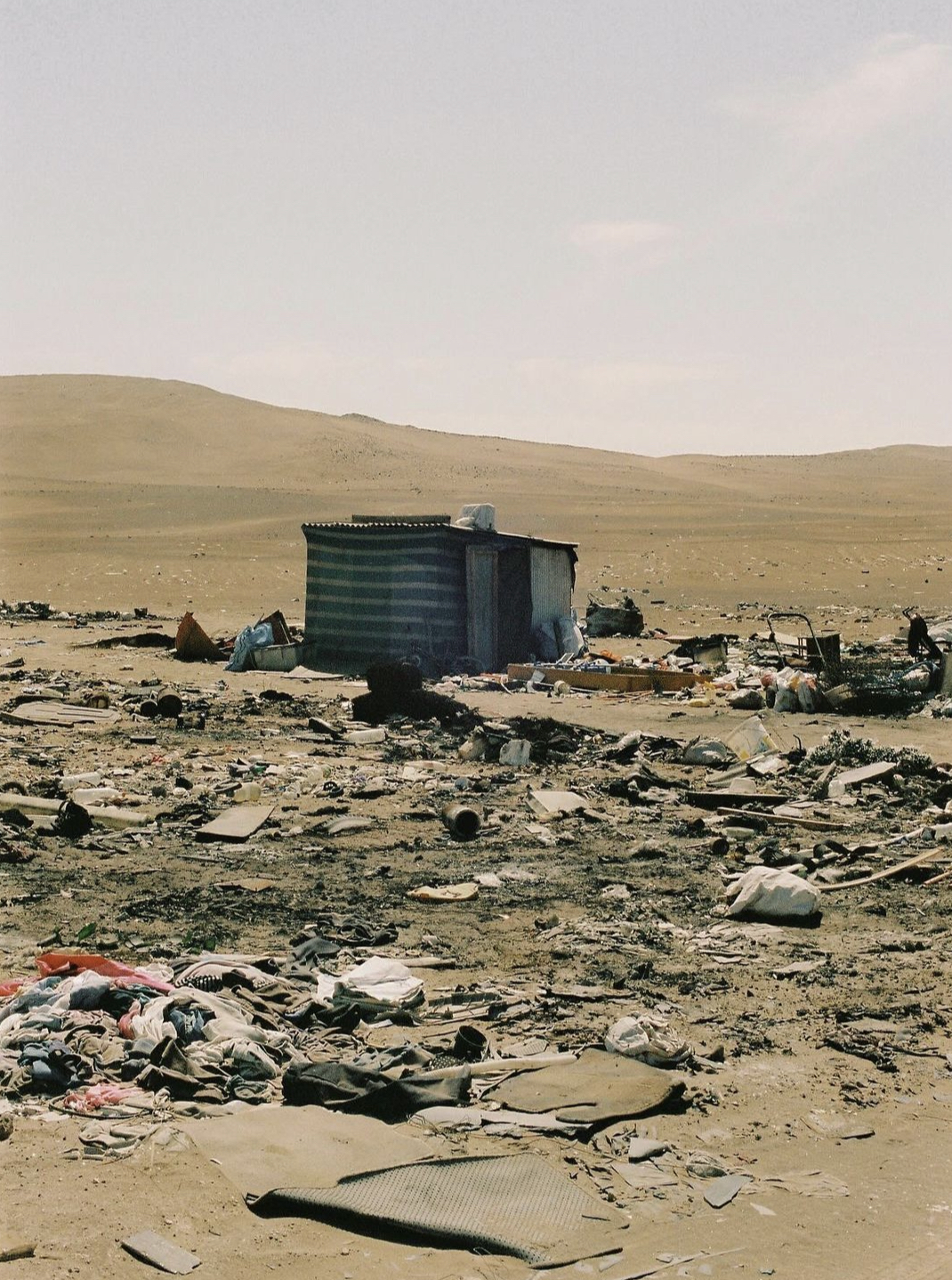¿Nuevo o usado? Ambos se han convertido en basura.
New or used? Both have become junk.
National Geographic, ya lo anunciaba hace más de un año en una de sus publicaciones. El desierto de Atacama, el más árido de la Tierra, y con las temperaturas más elevadas, pero de gran belleza visual y natural, está llegando a sus topes de contaminación y basura. Desde antes de los años 90 es el vertedero dónde va a parar la gran mayoría de la ropa que desechamos y que apenas se llega a estrenar nunca.
En la última década el boom en toneladas de residuos ilegales se ha disparado de forma incontrolada… ¿Qué se hace con todo aquello? ¿Quién dirige este descontrol? Entre el humo y el fuego, arden elegantes, humildes, lujosas e infinitas colecciones de marcas conocidas o sin identidad. En Atacama lo que no se quema, se vende. Otra opción, es reciclarlo con el proceso adecuado… Algunas organizaciones o marcas que cuidan del medioambiente lo están intentado hacer a pequeña escala. Estas últimas buenas acciones están dando luz a este desastre que se calcula entre 60.000 y 44 millones de toneladas de basura. Debemos recordar que la tasa de productos textiles en el mundo en los vertederos es de alrededor del 5 por ciento, pero en Atacama, El destino de estos residuos se distribuye de dos formas: 22% se valoriza o recicla y el 78% se va a eliminación, de este modo los basureros, rellenos sanitarios, micro-basureros u otros espacios destinados a la disposición final, no hacen más que crecer.
No son solamente prendas de ropa lo que allí está destruyendo el medioambiente sino que en este lugar hay neumáticos y también desechos de la industria del motor y de la construcción. Como si fueran buscadores de tesoros, una parte de la población local chilena se gana la vida con la venta y dándoles una segunda oportunidad como producto. Con suerte se puede encontrar adquisiciones sin usar totalmente nuevos. Debemos de preguntarnos hasta qué punto llega el consumismo y la falta de consciencia. La verdad es algo que se ha fomentado con el llamado «fast fashion» o moda rápida, el cual se refiere a un fenómeno de producción y consumo masivo que se incrementa a la misma velocidad a la que van cambiando las tendencias. El tiempo de vida de cada prenda fabricada es realmente corto y sin calidad de producto. En mi familia se guardan y conservan prendas en perfecto estado 50 años después de la compra ¿Dónde queda la calidad de aquello que estamos comprando sin control? La respuesta es sencilla en el basurero. Debemos de recapacitar sobre nuestras adquisiciones y cómo intentar que tenga una segunda vida o se reciclen. Es un importante para todos.
National Geographic, already announced it more than a year ago in one of its publications. The Atacama Desert, the most arid desert on Earth, and with the highest temperatures, but of great visual and natural beauty, is reaching its limits of pollution and garbage. Since before the 1990s, it has been the dumping ground for the vast majority of the clothes we discard and hardly ever wear.
During the last decade the boom in tons of illegal waste has skyrocketed out of control…. What is being done with it all, and who is in charge of this uncontrolled situation? Between the smoke and the fire, elegant, humble, luxurious and infinite collections of known brands or without identity burn. In Atacama, what is not burned is sold. Another option is to recycle it with the right process… Some organizations or brands that care for the environment are trying to do it on a small scale. These last good actions are giving light to this disaster that is estimated between 60,000 and 44 million tons of garbage. We must remember that the rate of textile products in the world in landfills is around 5 percent, but in Atacama, the destination of this waste is distributed in two ways: 22% is valorized or recycled and 78% goes to disposal, thus landfills, landfills, micro landfills or other spaces for final disposal, only grow.
It is not only clothing that is destroying the environment here, but also tires and waste from the motor industry. Like treasure hunters, part of the local Chilean population makes a living by selling them and giving them a second chance as a product. If you are lucky you can find a brand new unused product. We must ask ourselves how far consumerism and lack of conscience go. The truth is something that has been encouraged by the so-called “fast fashion” which refers to a phenomenon of mass production and consumption that increases at the same speed at which trends are changing. The life time of each manufactured garment is really short and without product quality. In my family, garments are kept and preserved in perfect condition 50 years after purchase. Where is the quality of what we are buying without control? The answer is simple: in the garbage. We must think about our purchases and how to try to give them a second life or recycle them. It is important for everyone.
¿Y la Industria textil? ¿Contaminación?
What about the textile industry? Pollution?
Toda industria tiene unos intereses y unos objetivos, mayormente económicos. Obviamente, la lógica nos dice que si un producto tiene un coste de producción más alto o sus materias primas son de mayor valor, su precio será más elevado en el momento de ser sacado al mercado. Este tipo de producto se tasa según es su longevidad y calidad, viniendo desde de una industria que tiene una ética moral superior al resto, que tendría que ser el ejemplo para este mercado capitalista. El fast fashion es perjudicial si no se tiene un control y una consciencia sobre ello, pero como todo tiene sus ventajas; moda para todos a bajo coste (no solo los ricos tienen derecho a estrenar algo que ponerse que sea nuevo) el problema es el consumismo.
No todas las personas tienen los recursos para comprar ropa de una excelente calidad sino los mínimos para vestirse cada día, pero si se replantea el comercio de la ropa de segunda mano o incluso la producción de las firmas de bajo coste con un trato con sentido moral, esa segunda oportunidad valdría para todos. No es un problema por falta de tecnología o recursos para poder reciclar y tener los medios para no dañar al medio ambiente, sino de falta de conciencia social y medio ambiental.
Todo lo que tiramos a la basura va a un vertedero y de allí, si el procedimiento es el adecuado se recicla; con la ropa o el calzado. Podemos desde venderlo, donarlo o reciclarlo, existen diferentes opciones. Esa sería nuestra responsabilidad como consumidores, pero la industria, la contaminación y el descontrol que es llevarlo a lugares tan lejanos como desiertos situados en Sur América o África, no es la solución sino una vía rápida de quitar del medio un grave problema.
Gracias a multitud de empresas locales e internacionales, junto a proyectos y un cambio de consciencia global estamos evolucionando la perspectiva de la industria. Podremos no ser parte responsable de una crisis climática, pero no podemos mirar hacia otro lado al contaminar e incluso enfermar otros lugares del planeta porque no sea nuestro país. Este espacio es de todos y a nadie le gustaría tener un vertedero al lado de casa.
Every industry has certain interests and objectives, mostly economic. Obviously, logic tells us that if a product has a higher production cost or its raw materials are of higher value, its price will be higher at the time it is put on the market. This type of product of value, longevity and quality comes from an industry that has a value. The fast fashion is harmful if there is no control and awareness about it, as everything has its advantages, fashion for everyone at low cost (not only the rich have the right to wear something new) the problem is consumerism.
Not all people have the resources to buy clothes of excellent quality but the minimum to dress, but if second-hand clothes or even low-cost firms with a meaningful treatment, that second chance would be worth for everyone. It is not a problem of lack of technology to be able to recycle or have the means to not harm the environment, but of lack of social and environmental awareness.
Everything we throw in the garbage goes to a landfill and from there, if the procedure is adequate, it is recycled; with clothing or footwear. We can sell it, donate it or recycle it, there are different options.That would be our responsibility as consumers, but the industrial, pollution and taking it to places as far away as deserts located in South America or Africa, is not the solution but a quick way to remove it from the environment or from sight.
Thanks to a multitude of local and international companies, together with projects and a change of global consciousness we are changing the perspective of the industry. We may not be responsible for a climate crisis, but we cannot look the other way by polluting and even making other parts of the planet sick. This space belongs to everyone and no one would like to have a landfill next to their home.
*Los desechos textiles no se desechará a partir de 2025. Se están realizando esfuerzos para superar el problema medioambiental y económico de los residuos provocado por la industria textil con las medidas adoptadas. La Unión Europea ha prohibido el vertido o la quema de desechos textiles en vertederos a partir del 1 de enero de 2025. Esta prohibición también incluye importantes oportunidades para la industria del reciclaje. Porque la contribución de los productos textiles al reciclaje es inferior al 1 por ciento. Para 2025, se pretende reciclar el 95% de los residuos textiles.Turquía también tiene como objetivo alcanzar mismas tasas que los criterios del bloque comunitario a largo plazo en sus estudios del «Plan de acción de reciclaje y desechos».
*La solución más prometedora (y que puede hacer frente a la magnitud del problema de los residuos) está en manos del Gobierno chileno. El Banco Mundial prevé que en 2050 se generarán 3400 millones de toneladas de basura al año. A medida que se amontona la basura de todo tipo, cada vez más países están aprobando leyes que exigen a los fabricantes que asuman la responsabilidad financiera de sus productos al final de su vida útil. Las leyes conocidas como Responsabilidad Ampliada del Productor (RAP) se han aprobado en India, Australia, Japón, Canadá y algunos estados de Estados Unidos. National Geographic.
*A nivel personal e individual. Si cada ciudadano y ciudadana es responsable de sus compras; de donar aquello que ya no necesita, darle una segunda vida y poder ser ético con sus adquisiciones, informándose del tipo de industria que está fomentando a crecer, nos estaremos ayudando a todos. La palabra es consciencia de lo que necesitas y de lo que no, de dónde acaban esas prendas y que alguien quizás pueda necesitarlo. De dar voz a los proyectos emprendedores que ayudan a salvar este mundo a diario. De la ética textil y hacia donde se dirige la industria.
*Textile waste will not be disposed of after 2025. Efforts are being made to overcome the environmental and economic problem of waste caused by the textile industry with the measures taken. The European Union has banned the dumping or burning of textile waste in landfills as of January 1, 2025. This ban also includes important opportunities for the recycling industry. Because the contribution of textile products to recycling is less than 1 percent. By 2025, it aims to recycle 95 percent of textile waste.Turkey also aims to achieve the same rates as the EU block criteria in the long term in its “Recycling and Waste Action Plan” studies.
*The most promising solution (and one that can address the magnitude of the waste problem) is in the hands of the Chilean government. The World Bank predicts that by 2050, 3.4 billion tons of waste will be generated each year. As waste of all kinds piles up, more and more countries are passing laws requiring manufacturers to take financial responsibility for their products at the end of their useful life. Laws known as Extended Producer Responsibility (EPR) have been passed in India, Australia, Japan, Canada and some U.S. states. National Geographic.
* At a personal and individual level. If each citizen is responsible for his or her purchases; to donate what he or she no longer needs, to give it a second life and to be ethical with his or her acquisitions, informing himself or herself of the type of industry that is helping to grow or promote, we will be helping us all. The word is awareness of what you need and what you don’t, of where those garments end up and that someone may need it. Of giving voice to the entrepreneurial projects that help save this world on a daily basis. Of textile ethics and where the industry is heading.
Está en tu mano, y está en la mía, está en las de todos cambiar este mundo. Que desiertos como el de Atacama vuelvan a ser cómo eran, parte de la Naturaleza: libres de tóxicos, vertidos y basura.
It’s in your hand, and it’s in mine, it’s in everyone’s hand to change this world. That deserts like the Atacama become again how they were, part of Nature: free of toxics, waste and garbage.










